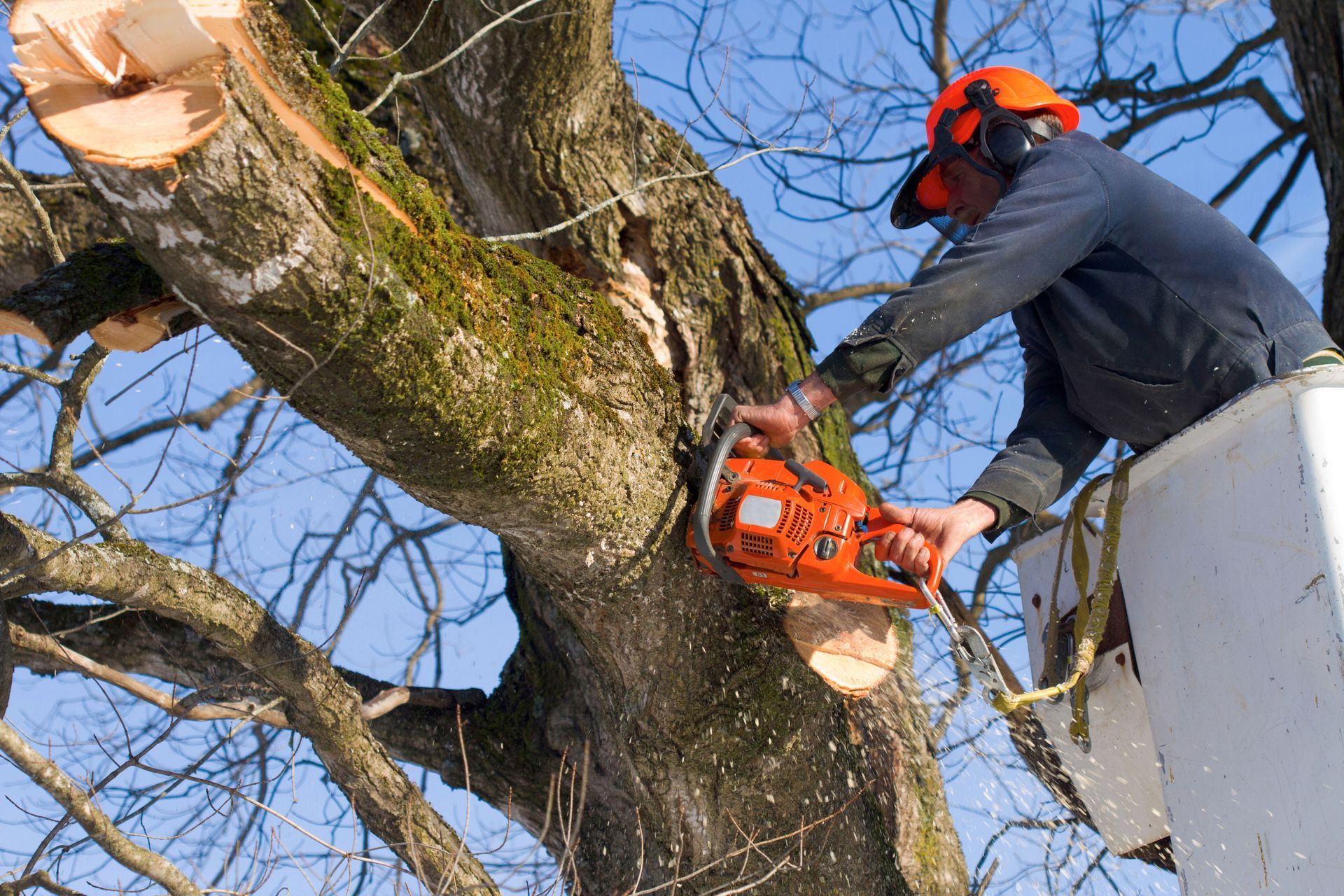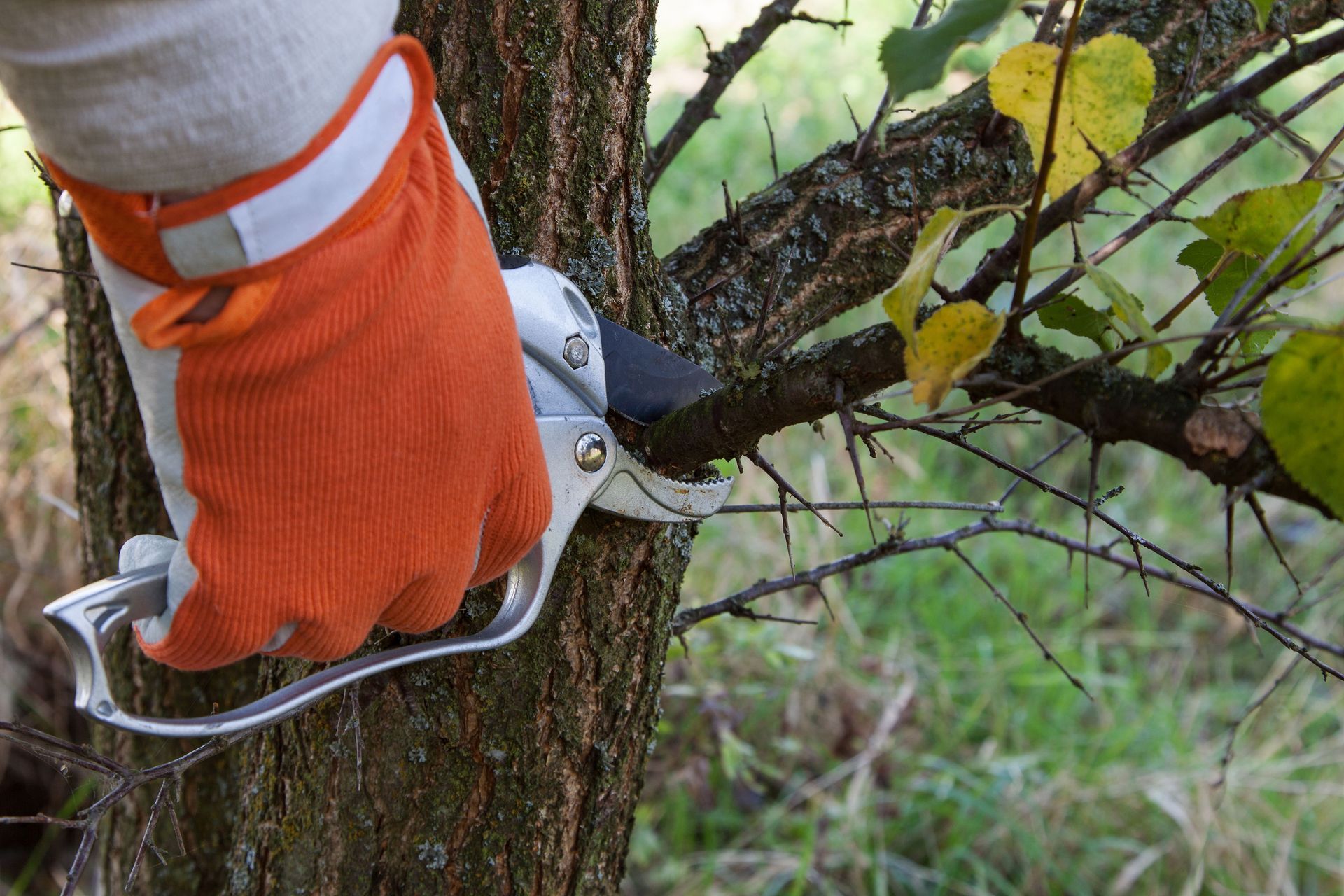November 17, 2020
Regular tree trimming is important both for the health of your tree and for the safety of your property. Tree trimming strengthens the core structure of the tree and it mitigates the risk of falling limbs. There are a few things to consider in determining how often to trim a tree.
How frequently should tree trimming and pruning be done?
Generally speaking, trees should be given a full prune about every 3 to 5 years. This may need to be done more or less often depending upon the species of tree and its growing environment. A full prune will help the tree to grow strong, full, and healthy.
A full prune involves several parts. The deadwood will be removed from the tree so that they do not break and fall later. About twenty-five to thirty percent of the tree should also be thinned out. Thinning out the tree allows it to allocate its resources more evenly which in turn strengthens the existing structure of the tree.
What time of year is best for tree trimming?
When it comes to trimming a tree, the technique is ultimately more important than timing. Trees can be trimmed any time of year but depending on what kind of trim is being done, it may be helpful to strategize the timing.
Winter is one of the best times to do a structural prune. Structural pruning is done to direct the growth of a tree by removing any limbs that are growing too densely and interfering with other limbs. Problem limbs that are growing out over a roof, or into other structures will also be addressed in this type of prune. Trees go into dormancy after they drop their leaves which means that the sap is down, that is it flows a little less. This is opportune for tree trimming because it means that the tree will bleed less sap and heal more quickly. Tree trimming in the winter also prevents the removal of new growth and gives the tree a foundation to take off and leaf out full and healthy in the spring.
The warmer seasons are the easiest time to remove dead wood from a tree for the simple reason that there are leaves on the living branches. It is also easiest to gauge a tree’s health and determine how much to thin out in the summer when the tree is fully leafed out. When trimming in the spring and summer it is important to trim at the limb collar so that the tree can heal properly and so that sprouts don’t grow from a stump.
When should dead wood and problem limbs be removed from a tree?
It is important for dead limbs to be removed as soon as possible. Deadwood is far more dry and brittle than green wood and it is far more likely to snap and break with a little bit of wind. Deadwood also produces rot which will encourage pest infestations that may spread to other trees. Removing dead wood as it becomes visible will keep a yard safer and trees healthier. Dead wooding can be done any time of year, but it is easiest when a tree is leafed out.
Limbs often need to be removed when they interfere with structures or get in the way of walkways, lawn mowing, etc. Problem limbs can be removed at any time, but tree limbs should be removed as soon as possible if they are growing too far over a roof, or if they start to interfere with powerlines. This can also be done any time of year, but winter is most ideal for removing large limbs as the stump will heal most quickly at that time.
Tree trimming in Colorado Springs for storm damage prevention
It is worthwhile to note the weather patterns that are unique to the front range. Colorado’s close proximity to the mountains creates sudden and sometimes severe weather patterns. Windstorms, blizzards, and hail storms can cause significant damage to property. The bomb cyclone in 2019 took down entire trees and large limbs all over Colorado Springs, and hail storms regularly take out limbs and branches particularly on the southwest side of town.
Tree trimming can help to mitigate the damage done by these storms. Dead limbs are more dry and brittle and are much more likely to snap in a storm. Removing dead limbs from a tree will help to reduce this risk. Some species of trees such as blue spruce have limbs that grow densely packed together. This can create a parachute effect when the wind hits them. Raising the canopy by removing the lower limbs, and thinning out densely growing branches can help to prevent a tree from being uprooted in a storm.
The best time to trim a tree by species
Tree trimming technique is different for deciduous, evergreen, or fruit trees. Deciduous trees need regular full pruning so that they grow correctly. Deciduous trees can be trimmed at any time of year. Cottonwoods, elms, and maples can be easily trimmed in the winter including dead wooding. Ash trees and honey locusts are much more difficult to trim in the winter because it is more difficult to locate deadwood.
Fruit trees are best trimmed in the winter because it will not interfere with fruit production. Fruit trees are more high maintenance and need more in depth pruning than most other trees. Fruit trees need to be fully pruned, including some of their smaller limbs to make sure that the limbs remain strong enough for fruit production. Trimming in the winter will help a fruit tree be ready to blossom out in the spring. If fruit production is not a concern, then fruit trees can be pruned at any time.
It is often tempting to prune and shape evergreen trees like you would a bush but this is not ideal for the tree. New evergreen growth occurs on the outermost part of the tree, so pruning in this manner is just removing the new healthy growth. Occasionally however it may make sense to prune back blue spruce or juniper for the sake of containment. It is more common to raise up an evergreen tree to make space below them and to mitigate storm damage risk. This can all be done at any time.
Summary
Tree trimming should be done regularly to keep a tree healthy. Tree trimming can be done at any time of year, but there is some strategy to timing it well in certain situations. Ultimately the most important thing when it comes to trimming a tree is using the proper technique, timing is secondary. See more tree trimming basics.
Precision Tree has provided tree trimming services in the Colorado Springs area for nearly twenty years. We offer free estimates and top-notch service.




